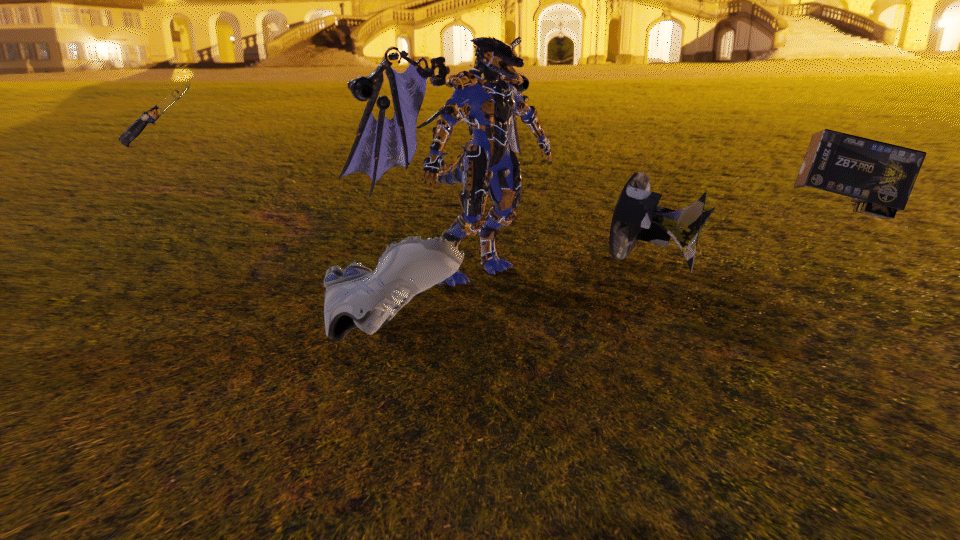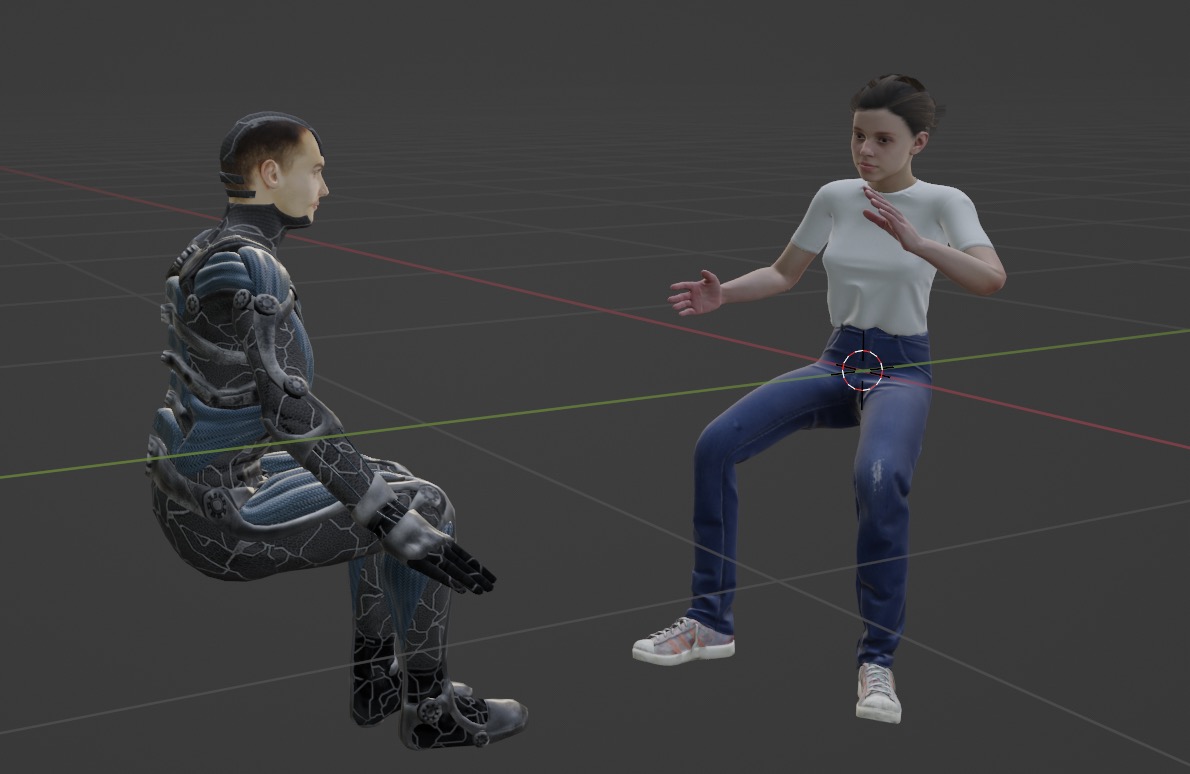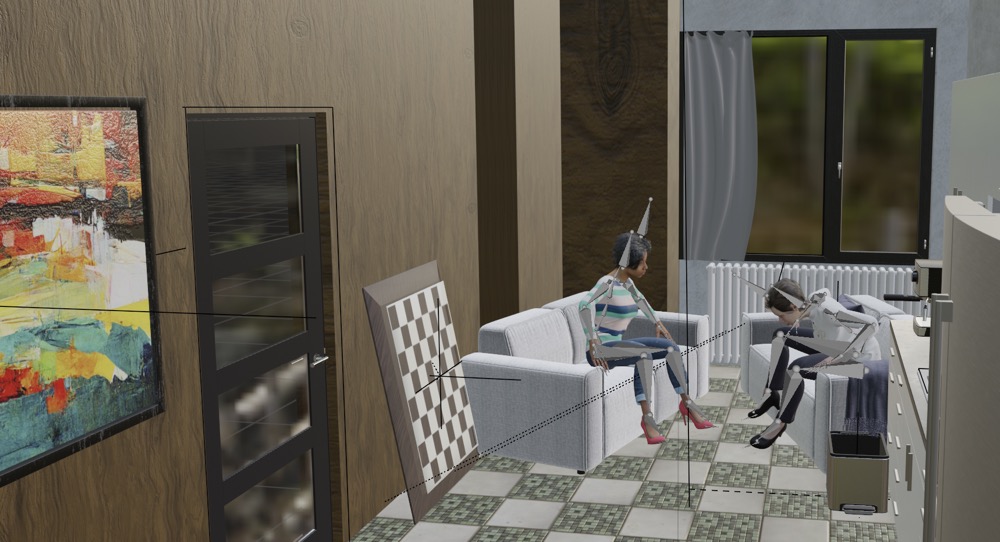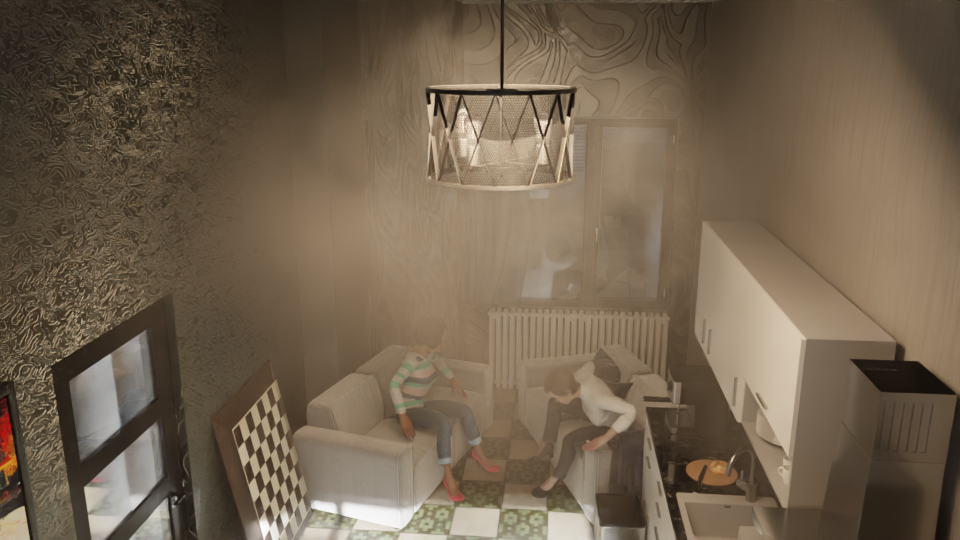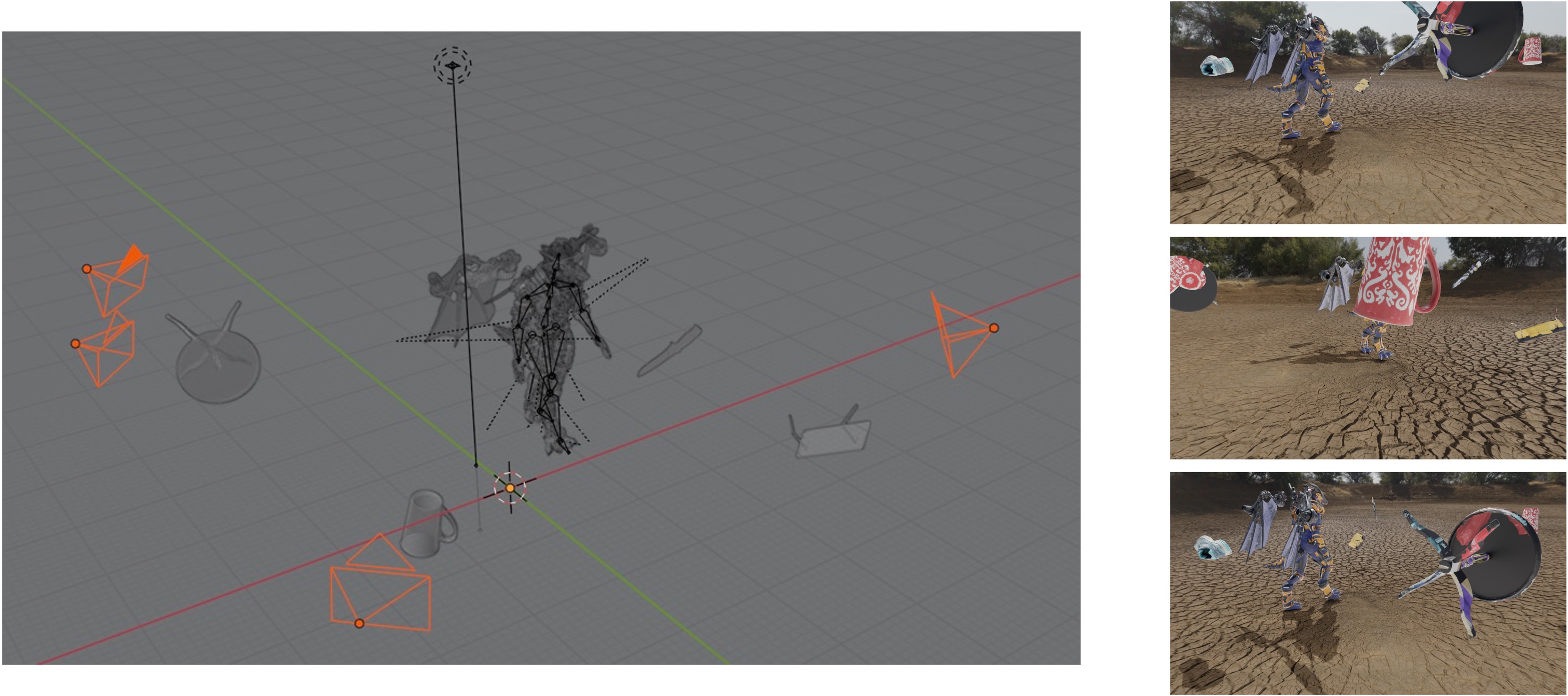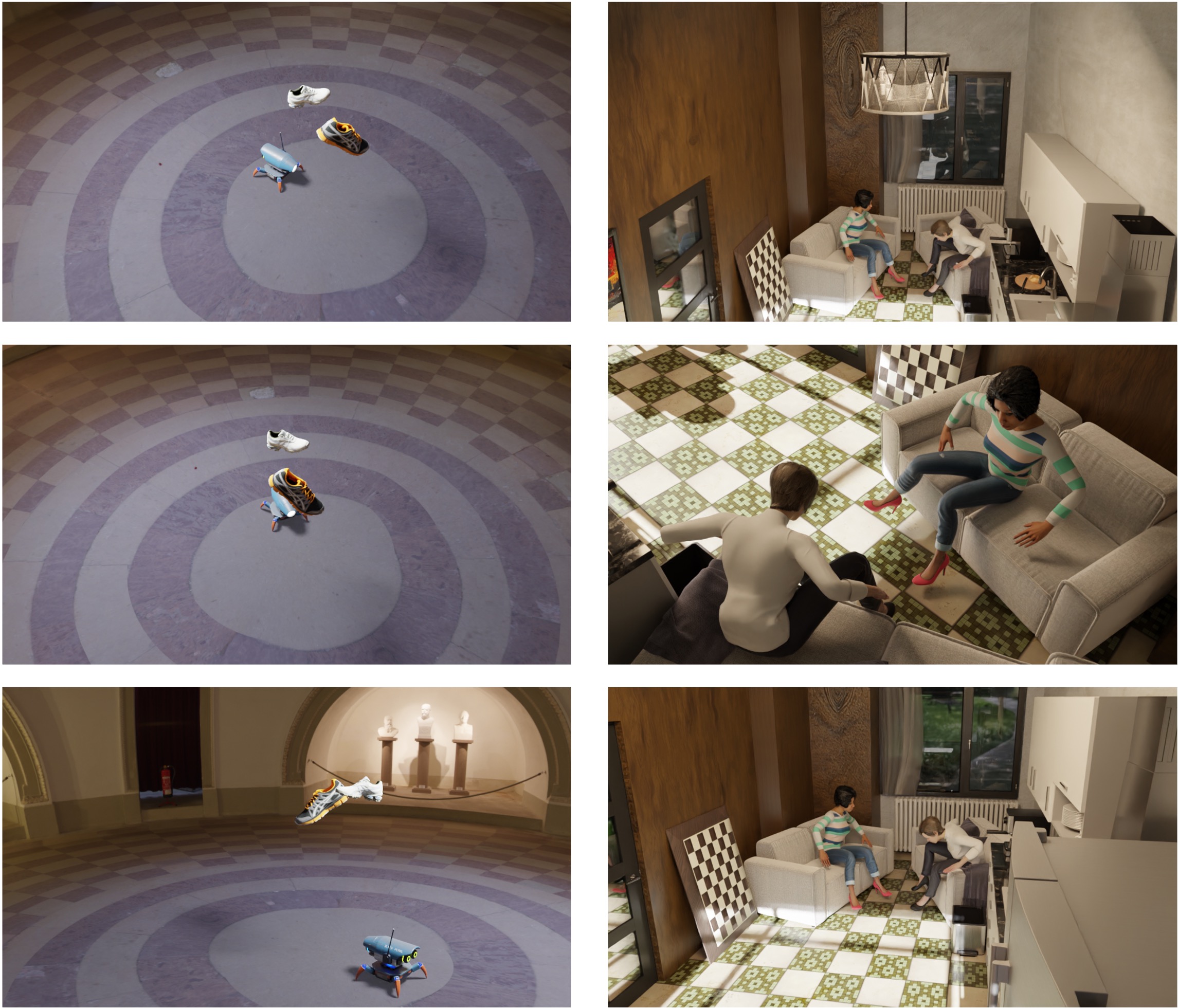This code implements the data generation pipeline of our PointOdyssey dataset.
[Paper] [Project Page]
- Update 02/21/24: We released PointOdyssey v1.2. This fixes more bugs with masks and depths, and expands the dataset to a total of 159 videos (131 train, 15 val, 13 test). We also updated the dataloaders in the PIPs++ repo.
- Update 10/09/23: We released PointOdyssey v1.1. In this version, we resolve bugs including missing masks of some sequences, and wrong ground depth. We simplify camera information, which now follows the standard perspective camera model.
- Update 09/18/23: PIPs++ is ready! Check out the code for more details.
The codebase is built on Blender 3.1+, and tested on Blender 3.30 on Linux and 3.2.2 on MacOS. To set up the environment, first install Blender 3.1+ and then install the required python packages in your conda environment:
conda create -n point python=3.9
conda activate point
pip install -r requirements.txt
And install OpenEXR by running:
conda install -c conda-forge openexr-python
The data generation pipeline also depends on some addons of Blender, including:
- Rokoko Studio Live Plugin for Blender (for motion retargeting)
- SMPL-X Blender Add-on (for human body model)
- Stop Motion OBJ (for importing mesh sequences)
Please install the addons following the instructions on their websites. If you are using Linux, make sure the addons are available in ~/.config/blender/$VERSION/scripts/addons.
For a quick start, download the demo data here and run:
bash scripts/render_robot.sh
You will find the rendered images in results/robot/, including RGB images, depth maps, segmentation maps, normal maps, and point trajectories:
If a GPU is available on your machine, set --use_gpu in the scripts to accelerate rendering.
The codebase supports generating outdoor scenes with deformable objects interacting with the environment. To generate outdoor data, you will need:
- HDR environment maps (e.g. from HDRI Haven)
- Human motion data (e.g. from AMASS)
- Camera data (from Mannequin Challenge)
- 3D models (from PartNet and GSO)
- Humanoid models (e.g., from BlenderKit and Mixamo)
The ./data folder shows the directory structure of the required assets. To generate your customized data, you will need to download AMASS data and put it into ./data/motions (e.g., ./data/motions/CMU/01/01_01_stageii.npz).
To enlarge the data diversity, you might also want to download the full dataset of GSO and PartNet.
After preparing the assets, you can run the following command to render outdoor scenes:
bash scripts/render_outdoor.sh
You will find the rendered images in ./results/outdoor/, which should look similar to the video below:
In our dataset, we also apply random forces to the objects in the scene to generate more diverse interactions. You can generate such data by adding --add_force --scene_root ./data/blender_assets/hdri.blend in the script.
You can also utilize other deformable models such as animals for data generation. Here is an example of rendering a rabbit from DeformingThings4D:
bash scripts/render_animal.sh
Download the full DeformingThings4D and put it into ./data/deformingthings4d to render more data.
In addition to outdoor scenes, we generate realistic indoor scenes, featuring humanoids with environment-aware interactions. To generate new scenes, you will need some skill with Blender.
We utilize mocap data from real 3D environments and rebuild the associated scenes in Blender, to support realistic interactions between humanoids and the scenes. Specifically, we use:
- Human motions and 3D scene scans from Egobody and GIMO
- 3D furniture models from BlenderKit and 3D-front
- Virtual humans from Mixamo and Turbosquid
In our case, the first step is to rebuild 3D scenes using the downloaded 3D furniture, to replicate specific 3D environments from the real scans. Since the human motions from Egobody and GIMO are initially aligned with the scene scans, we can directly import the motions into Blender and render the data. In the next section, we show how to make your own data based on EgoBody dataset and characters from Mixamo.
To rebuild 3D scenes, you can use BlenderKit to import 3D furniture in Blender to match the layout of 3D scans:
Download the Egobody dataset and put it into ./data/egobody.
Then, run the following command to convert the motion data into Blender readable SMPL-X motions.
python -m utils.egobody2amass
Download human characters from Mixamo. Open the fbx file in Blender, rename the Armature as exo_gray (or another name you choose) and save the Blender file as exo_gray.blend in ./data/characters.
Then, run the following command to retarget the motions.
blender --background --python ./utils/egobody_retargeting.py -- --seq recording_20210918_S05_S06_01
This will produce retargeted motions in ./data/egobody/scenes/scene.blend:
Open the rebuilt 3D scene in Blender, and append the retargeted character file. You can then manually add camera trajectories to render images. At this point, you should be able to see something similar to the image below:
From this stage, it is easy to generate multi-view data. For example, by attaching the camera to the head bone of the characters, you can render ego-centric views. You can design different camera trajectories to render the scene from diverse views. We provide additional information on multi-view rendering in the next section.
Once you have prepared the scene, run the following command to render it:
bash scripts/render_indoor.sh
We also support adding random fog, and randomizing textures to maximize the diversity, by setting --add_fog and --randomize in the script:
The codebase supports generating multi-view data. For a quick start, run:
bash scripts/render_outdoor_multiview.sh
In the example above, we render 3 views of an outdoor scene. You can also render more views by setting --views to a larger number.
We randomly sample camera trajectories from Mannequin Challenge dataset. You can also manually design camera trajectories to render more diverse views, or use other hand-crafted camera trajectories, by modifying the code in render_human.py.
For indoor scenes, the following script will generate multi-view data with static cameras:
bash scripts/render_indoor_multiview.sh
The rendered data should look like this:
The full dataset can be downloaded from the project page, under CC BY-NC-SA 4.0 license. The dataset includes:
- Multi-modal data (RGB, depth, normals, instance segmentation)
- Ground truth 2D trajectories, with visibility lables
- Ground truth 3D trajectories
- Camera parameters
Please refer to utils/reprojection.py for details on camera conventions, coordinate systems and depth scales.
If you use this code or our data for your research, please cite:
PointOdyssey: A Large-Scale Synthetic Dataset for Long-Term Point Tracking. Yang Zheng, Adam W. Harley, Bokui Shen, Gordon Wetzstein, Leonidas J. Guibas. In ICCV 2023.
Bibtex:
@inproceedings{zheng2023point,
author = {Yang Zheng and Adam W. Harley and Bokui Shen and Gordon Wetzstein and Leonidas J. Guibas},
title = {PointOdyssey: A Large-Scale Synthetic Dataset for Long-Term Point Tracking},
booktitle = {ICCV},
year = {2023}
}


